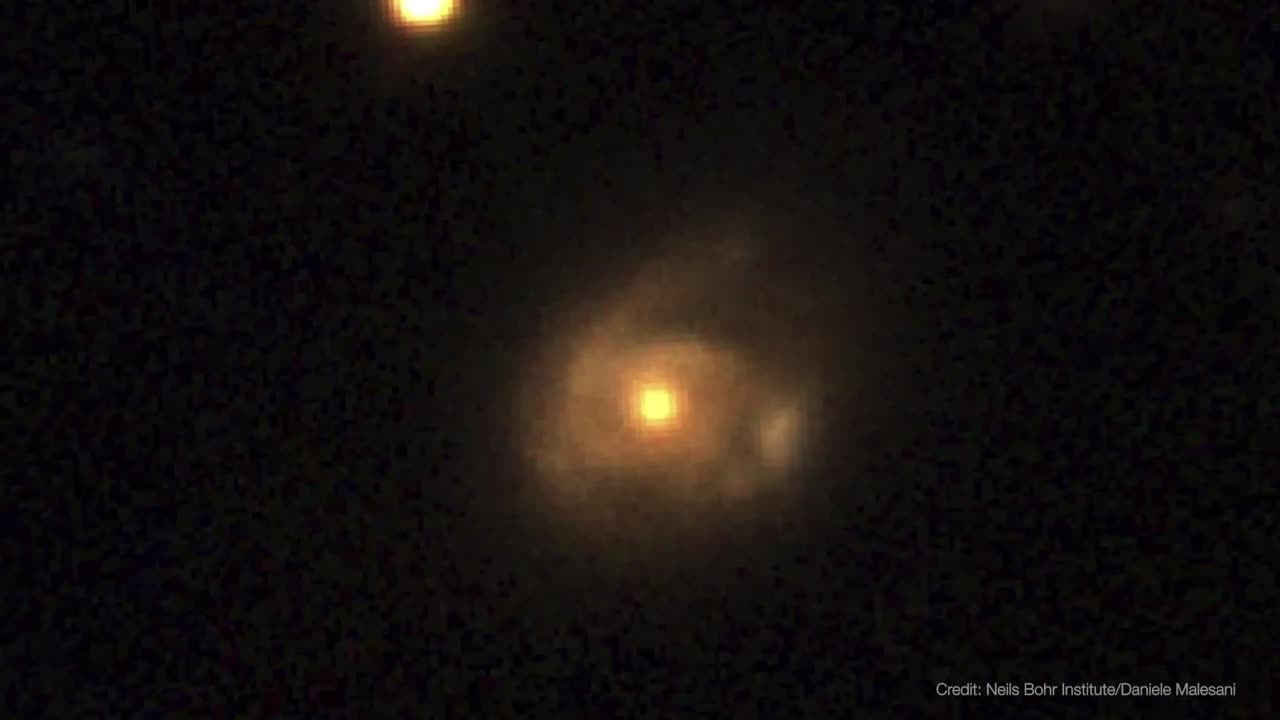Premium Only Content

Black Hole Snack Attack
Using NASA’s Neil Gehrels Swift Observatory, which launched in 2004, scientists have discovered a black hole in a distant galaxy repeatedly nibbling on a Sun-like star. The object heralds a new era of Swift science made possible by a novel method for analyzing data from the satellite’s X-ray Telescope (XRT).
When a star strays too close to a monster black hole, gravitational forces create intense tides that break the star apart into a stream of gas. The leading edge swings around the black hole, and the trailing edge escapes the system. These destructive episodes are called tidal disruption events. Astronomers see them as flares of multiwavelength light created when the debris collides with a disk of material already orbiting the black hole.
Recently, astronomers have been investigating variations on this phenomena, which they call partial or repeating tidal disruptions.
During these events, every time an orbiting star passes close to a black hole, the star bulges outward and sheds material, but survives. The process repeats until the star looses too much gas and finally breaks apart. The characteristics of the individual star and black hole system determine what kind of emission scientists observe, creating a wide array of behaviors to categorize.
On June 22, 2022, XRT captured Swift J0230 for the first time. It lit up in a galaxy around 500 million light-years away in the northern constellation Triangulum. Swift’s XRT has observed nine additional outbursts from the same location roughly every few weeks.
Scientists propose that Swift J0230 is a repeating tidal disruption of a Sun-like star orbiting a black hole with over 200,000 times the Sun’s mass. They estimate the star loses around three Earth masses of material on each pass. This system provides a bridge between other types of suspected repeating disruptions and allowed scientists to model how interactions between different star types and black hole sizes affect what we observe.
Swift J0230’s discovery was possible thanks to a new, automated search of XRT observations called the Swift X-ray Transient Detector.
After the instrument observes a portion of the sky, the data is transmitted to the ground, and the program compares it to previous XRT snapshots of the same spot. If that portion of the X-ray sky has changed, scientists get an alert. In the case of Swift J0230, astronomers were able to rapidly coordinate additional observations of the region.
-
 9:34:03
9:34:03
FusedAegisTV
1 day agoMario Galaxy, Batman, Real Talk/Politics, & MORE - V-Day 💗 Friday Variety Stream!
70K1 -
 1:10:49
1:10:49
Vigilant News Network
14 hours agoRFK Jr. Drops a Stunning Announcement | The Daily Dose
88.5K46 -
 49:49
49:49
Candace Show Podcast
17 hours agoEXCLUSIVE: Blake & Ryan’s Desperate Legal Strategy Exposed! | Candace Ep 147
200K142 -
 1:32:20
1:32:20
2 MIKES LIVE
14 hours ago2 MIKES LIVE #180 with guest Kyle Rittenhouse!
58.7K4 -
 9:40
9:40
Tactical Advisor
19 hours agoBest Home Defense Shotgun Build | Genesis Gen 12
52.1K4 -
 56:44
56:44
VSiNLive
16 hours ago $4.50 earnedFollow the Money with Mitch Moss & Pauly Howard | Hour 1
75.8K1 -
 1:05:48
1:05:48
The Amber May Show
19 hours ago $3.77 earnedBig Balls | You Know It's Bad When Legacy Media Reports On Big Balls | Sam Anthony
44.5K7 -
 LIVE
LIVE
SoniCentric
1 day agoEnjoy a COZY Valentine's Day Escape to Paris with the BEST blend of Romantic Music
157 watching -
 1:59:52
1:59:52
Revenge of the Cis
17 hours agoEpisode 1447: Love Train
64.7K8 -
 1:03:34
1:03:34
In The Litter Box w/ Jewels & Catturd
1 day agoCONFIRM KASH NOW! | In the Litter Box w/ Jewels & Catturd – Ep. 742 – 2/14/2025
85.9K61